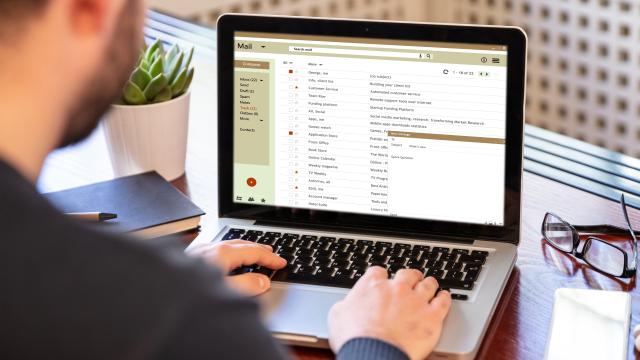Managing your inbox is a never-ending task, which is why we should simplify it as much as possible: And one way to do that is to rely on the four Ds, or the 4D method. It’s easy to remember and easy to implement, which makes it helpful for anyone who has a pile of emails to contend with every day. Here’s how to follow it.
What is the 4D method of inbox management?
This method of managing your overflowing inbox has been around quite a while and rests on quick decision-making to help you easily weed through it all. For instance, Email Overload Solutions, a purveyor of eBooks on the topic of inbox management, has been recommending it since at least 2014. Time-tested, it works—but only if you really get what you’re supposed to do.
4D stands for, obviously, four “D”s:
- Delete the email
- Do what the email says
- Delegate what the email wants you to do
- Defer it
Proponents of the method, like Aleksandra Brzeska, business development manager at XTRF Translation Management System, says this works as long as you adhere to it. Here’s how to put it in action.
How to use the 4D method of inbox management
4D is similar to the one-touch rule. In fact, it relies on it, but takes it a step further. When using the one-touch rule, you make a decision about the email as soon as you open it up. For these techniques to work, you have to be opening every email, or at least looking at it and identifying from the subject line whether it’s worth opening. So, first things first, you’ll need to designate a time every day to sort through all your communications. Use timeboxing to block out time every morning, for example, to get this done.
When it’s time to go through your messages every day, set out to make a choice about each one, referring to the four options above. If it’s irrelevant, spam, or won’t ever require a follow-up, delete it. If it calls for a task that is doable right now, you’re responsible, and/or it’s pretty urgent, just do it. If it’s a less urgent task for someone else in your department or could be handled by another person without overloading them, delegate it and forward it their way. If it’s something that could or should be handled in the near future but doesn’t require immediate action, defer it by archiving it, putting it in a folder, or starring it.
When this is done, go back through once more and archive or delete anything that’s now been done or delegated, clearing out your inbox for the next wave of messages. The benefit of using this method is that it makes decision-making simple, quick, and actionable, plus keeps your inbox low or close to zero. Removing unnecessary choices or procrastination streamlines the process and keeps you moving in just one of four ways, ensuring everything gets done or removed from your plate.

Leave a Reply
You must be logged in to post a comment.